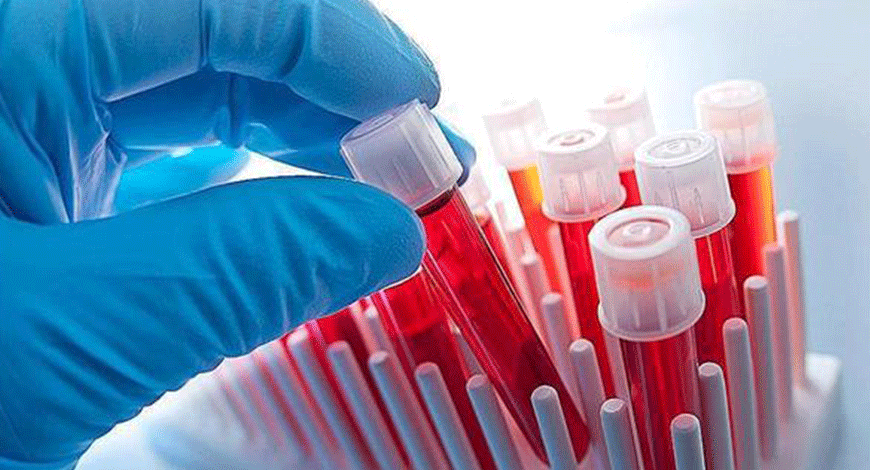Hematology Instruments and Reagents
Advances in POC hematology analysis

Point-of-care hematology analysis can help to generate the data needed to make decisions about patient care quickly, both of which can improve patient outcomes in emergency situations and also help hospitals to meet waiting time targets safely.
The full blood count (FBC) is one of the most common ‘routine’ tests in clinical pathology because of the valuable information it provides in diagnosing and monitoring disease and in controlling patient treatments, such as pre- and post-operative checks and determining if chemotherapy or other medications can be given.
The FBC is not a single test but a profile which examines the numbers, volumes, and other physical attributes of the cellular components of blood. In a FBC analyser, whole blood is aspirated automatically before being split into several smaller aliquots. The different measurements take place simultaneously in dedicated chambers with corresponding dedicated reagents which are connected directly to the analyser. The raw measurements are then used to generate the primary results of the FBC and to calculate additional parameters. The time taken from aspiration to results varies slightly from instrument to instrument; in general this is around 60 seconds.
The cells under scrutiny are red blood cells (RBC), white blood cells (WBC) and platelets plus a colorimetric measurement of hemoglobin, the protein responsible for transporting oxygen around the body.
In additional to an overall count of WBCs, the FBC analyser also sub-divides the different types of WBC and detects and flags abnormal or immature WBCs. The numbers of these different types of WBC and the total count provides invaluable information about various disease processes.
One of the biggest challenges of analysing blood is time. Because the FBC examines cells as opposed to a chemical component, they can potentially start to change as soon as the blood sample is taken. For example, the coagulation process begins immediately and, if this is not prevented, then the blood would clot, and the individual cells would be impossible to count. Blood is taken into sample tubes containing an anticoagulant, EDTA, which prevents it from clotting.
The art of bringing hematology testing to the point of care
 Jeanette Nikus
Jeanette Nikus
Global Product Manager,
Boule Diagnostics
A complete blood count (CBC) forms the basis for clinical decisions on health conditions affecting the blood cells. Results can give an indication of a possible diagnosis or be used in monitoring of disease progression. Compared with sending samples away for analysis, CBC testing at point of care, therefore, contributes to earlier initiation of treatment and minimizes the need to call back the patient for re-analysis in case of pre-analytical errors.
Since the very first cell counters were introduced in the ’50s, the hematology system is the work horse in clinical laboratories all over the world. These systems were initially intended for hospital laboratories, as they required skilled staff and a high sample load to justify their relatively high cost.
However, with the increasing need for modern and decentralized healthcare, the demand for simple and reliable instruments and procedures emerged and prompted the development of benchtop hematology instruments that could be used in a near-patient clinical setting with a minimum of training.
Although technology advancements have enabled miniaturization, scaled-down technologies intended for large hospital laboratories can be unnecessary complex and costly for the smaller testing facility. Today’s cost-efficient benchtop analyzers are, therefore, purpose-designed to suit the needs of smaller laboratories. Such systems require minimum of training, and are robust enough to be installed at locations where service can be at a far-off distance.
Regardless of the choice of a 3-part or 5-part hematology system, of utmost importance is the ability of the analyzer to detect and flag for abnormal samples. As the performance of a modern benchtop 3-part hematology analyzer is expected to be at par with a more complex 5-part analyzer; 3-part systems can handle pathological samples with better efficiency than scaled-down entry-level 5-part systems.
For most cases, the same decisions can be made with a 3-part system as with a 5-part system. The results from a simple CBC will support in anemia investigations, in determination of hemostatic capacity, and can give an indication of a viral infection or a bacterial infection that can be treated with antibiotics. If abnormal values are obtained, microscopy is typically required, irrespective of instrument type.
Unlike a panel of biochemical tests that are measured individually, the parameters of a FBC analyser are inter-related so FBC results should be interpreted as a whole, because one parameter can influence another. For this reason, it is also important that an analyser has clear flags, alarms, and interpretive messaging to assist the operator.
The availability and use of POC blood testing has increased in recent decades. While the use of POC testing brings the results closer to the patient and reduces turnaround time, there are considerations that should be weighed up when deciding to implement POC testing. Biomedical staff within the laboratory are skilled in the operation and maintenance of analysers and the interpretation of results. POC instruments are normally operated by other healthcare professionals whose primary focus is not the analyser.
Modern POC analysers are designed to be easy to use with clear assistance for the operator and offer comparable results; however, if the turnaround time from the laboratory does not impede patient care, then a laboratory processed test will always be preferable.
That said, there are many instances where very rapid access to results can make a tangible difference to patient care and diagnosis. When an analyser combines the FBC with a C-reactive protein level (CRP), the suite of results helps the clinician quickly assess the patient and make decisions about the next steps such as whether to admit or whether to prescribe antibiotics. This is an important weapon in the fight against anti-microbial resistance. If deployed in the community, POC testing can help to avoid costly and unnecessary admissions to hospital which is a benefit to the patient, particularly with children and the elderly, and can also save valuable hospital resources.
Other POC FBC instrumentation may be used to assess patient medication. By placing an analyser in a chemotherapy unit, cancer patients can have blood taken to determine if it is safe for them to receive their treatment. As the results are available immediately, these vulnerable patients do not have to spend any longer than necessary in a hospital or clinic and can avoid additional visits. This has been invaluable during the pandemic to keep chemotherapy patients away from areas where there was a high-risk of exposure to COVID-19.
Thus, with well established procedures, the right equipment and excellent operator training, a POC solution has the capacity to transform the patient pathway.
Another area of development is in instrument connectivity to allow results to be easily transmitted and viewed. This has benefits in terms of patient data management but also allows POC instruments to be managed remotely by pathology staff to assist the implementation of a POC solution and ensure quality.
Ultimately, the future of POC analysers should be shaped by the needs of the clinicians and the patient.












